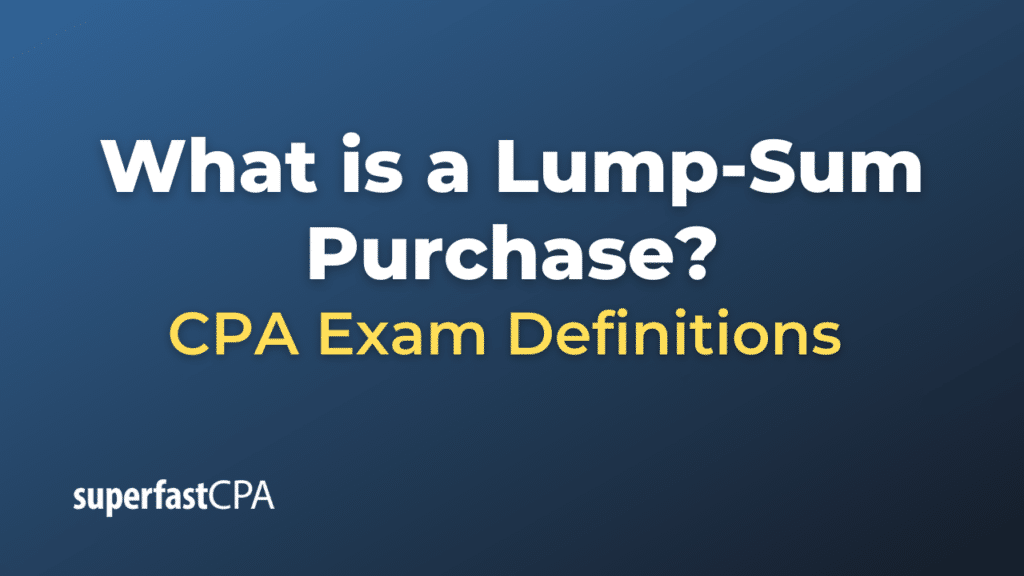Lump-Sum Purchase
A lump-sum purchase, also known as a basket purchase, occurs when a company or an individual buys multiple assets together for one single, combined price. This kind of purchase often happens when buying a business, where the price paid is for a combination of assets such as buildings, land, equipment, and inventory.
After a lump-sum purchase, the buyer needs to allocate the total cost among the different assets acquired based on their respective fair market values. This is necessary for accounting purposes as different assets have different depreciation rates and methods, and some assets might not depreciate at all (like land).
The allocation process can be complex and usually requires appraisals or other forms of valuation to determine the fair market value of each asset. The total cost is distributed proportionally among the assets based on these values.
For example, if a company buys a business for $1 million that includes a building valued at $600,000, land valued at $300,000, and equipment valued at $100,000, the cost would be allocated proportionally among these assets based on their respective values.
Example of a Lump-Sum Purchase
Let’s consider a scenario where a company purchases a small manufacturing business for a lump sum of $1,000,000. This purchase includes:
- A piece of land valued at $400,000
- A factory building valued at $300,000
- Machinery and equipment valued at $200,000
- Inventory valued at $100,000
The first step in accounting for this lump-sum purchase is to determine the proportion of the total purchase price that each asset represents:
- Land: $400,000/$1,000,000 = 0.4 or 40%
- Building: $300,000/$1,000,000 = 0.3 or 30%
- Machinery and equipment: $200,000/$1,000,000 = 0.2 or 20%
- Inventory: $100,000/$1,000,000 = 0.1 or 10%
Next, these percentages are applied to the total purchase price to allocate the cost among the assets:
- Land: $1,000,000 * 0.4 = $400,000
- Building: $1,000,000 * 0.3 = $300,000
- Machinery and equipment: $1,000,000 * 0.2 = $200,000
- Inventory: $1,000,000 * 0.1 = $100,000
So, in the company’s accounting records, the cost of the land will be recorded as $400,000, the cost of the building will be $300,000, the cost of the machinery and equipment will be $200,000, and the cost of the inventory will be $100,000.
This allocation is essential for further accounting processes like calculating depreciation for the building and machinery, or cost of goods sold for the inventory. Note that land is not depreciated.
Please note, this is a simplified example. In reality, determining the fair market values might require appraisals or other forms of valuation, and the process can be more complex.













